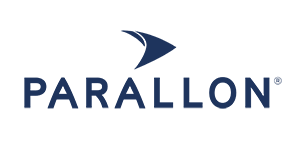If hospitals or healthcare systems have not already weathered large-scale system conversions, then those in leadership positions know it’s coming sooner rather than later. System conversions can be daunting enough with key resources assigned to project duties and the retraining of entire revenue cycle teams. Cleaning-up aged accounts receivables (A/R) on legacy systems is part of the process as well, and it comes with its own challenges.
It would be wonderful if converting systems was as simple as switching off old ones and switching on new ones—voila! Unfortunately, it’s a process that involves making decisions sometimes a year in advance of the actual conversion.
Experienced hospital executives know that amid the various pressures system conversions entail, attention should be paid to A/R strategies. In worst-case scenarios, careless legacy strategies can lead to costly A/R backlogs and related claims denials, all leading to disruptions in revenue and worse—a hit on cash reserves.
As a new system gathers momentum and an old one winds down, it should be decided if the health systems’ billers can toggle back and forth between systems. This “swivel-chair strategy” has been employed successfully on occasion, but also carries with it significant financial risks.
While nothing eliminates conversion challenges, planning and forethought can help leadership make timely, deliberate decisions on how their institutions will manage legacy A/R situations. There are strategic alternatives for finance leaders to consider as they outline A/R plans from pre-conversion through post-conversion.
Start with a Conversation
When working with hospital leaders to help plot system changes, start conversations by discussing A/R strategies across the whole conversion process. While leadership teams’ overarching goals for conversions are typically uniform—that is seamlessly introducing and integrating new systems with as little operational and fiscal upheaval as possible—the chief concerns during conversions often differ among leaders.
For example, frequently the biggest fear of CFOs is the threat of cash flow decelerations that can accompany system conversions. Revenue cycle leaders often share CFOs’ cash concerns, but also wrestle with forward-facing challenges of rolling out entirely new systems while bearing the responsibility for shoring up legacy systems and maintaining consistent cash flow.
Mind the Gap
As old A/R systems fade, the cash they deliver begins to taper off. Until new systems begin generating normal levels of cash flow—which can take 30 to 45 days or more—this slowing cash flow regularly forces leadership teams to float their hospitals’ operations—potentially absorbing costly hits to their cash reserves until their new systems have gathered steam and begin generating revenue to support operations. From a balance sheet and liquidity perspective, this situation is far from ideal.
From revenue cycle leader operational perspectives, it’s even more complicated. As they guide their teams through training, troubleshooting, and project demands that such integrations require, they must either split their teams’ focus or repurpose portions of the teams to ensure that legacy accounts are resolved on a timely basis so that overall performance doesn’t falter.
For these reasons, many health systems consider working with vendor partners to offset some of the logistical burdens while they focus on implementing their new systems. Vendors should have experience across various revenue cycle platforms and with payers across geographies.
Give Your Team Time
Far too many hospitals, in order to avoid fiscal and operational issues, rush the process. This repeatedly leads to an incomplete adoption of the new system and downstream operational issues.
The greatest success comes from adopting a four- to six- month cascading (i.e., day 120+, day 90+) pre-conversion clean-up followed by post-conversion run outs. From a process perspective, there are benefits on many fronts.
Extra time allows teams to assess operational gaps between legacy and new systems. Teams can then deliberately address and reconcile workflow issues, better understand how their current infrastructures need to be leveraged and/or repurposed, and develop more robust and compliant information and workflows so problematic legacy process issues are not brought into new environments. Extra time built into the schedule also allows for consistent cash flows throughout the conversion and addresses resource constraints during demanding training periods.
Most important, by avoiding the temptation to rush the process, legacy A/R systems can be wound down, accounts can be reconciled, and cash flow can be supported while new systems generate revenue.
With a partner experienced in handling legacy A/R conversions, hospitals reap the benefits of a much more seamless integration, which includes focusing attention toward the future, and moving more confidently forward with their new systems.






